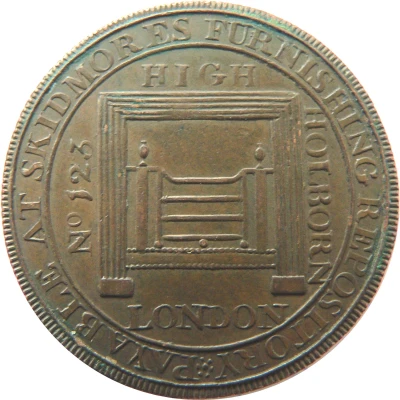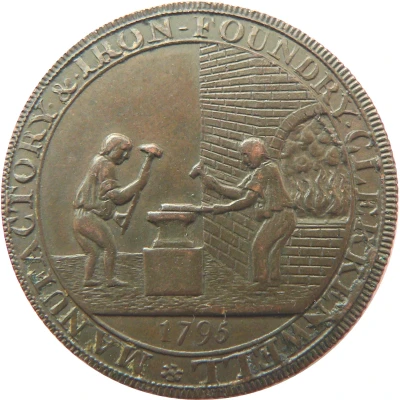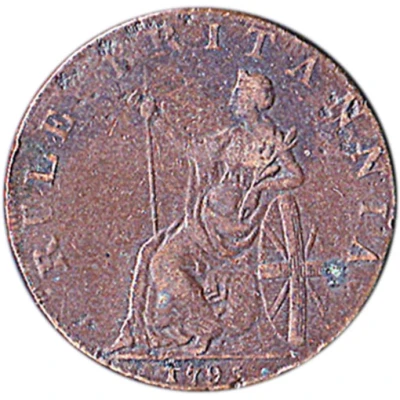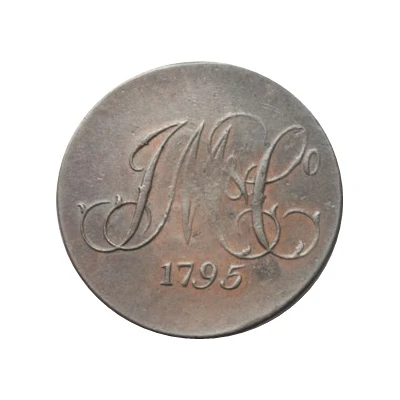


© ZacUK
½ Penny Middlesex - Skidmore
1795 year| Copper | 10.29 g | 29.5 mm |
| Issuer | United Kingdom (United Kingdom, British Overseas Territories and Crown Dependencies) |
|---|---|
| Type | Token |
| Year | 1795 |
| Value | ½ Penny (1⁄480) |
| Currency | Conder tokens (1787-1797) |
| Composition | Copper |
| Weight | 10.29 g |
| Diameter | 29.5 mm |
| Thickness | 1.2 mm |
| Shape | Round |
| Technique | Milled |
| Orientation | Coin alignment ↑↓ |
| Demonetized | 1797 |
| Updated | 2024-10-09 |
| Numista | N#109506 |
|---|---|
| Rarity index | 93% |
Reverse
Inner circle containing two men working at anvil left, a large brickwork forge with fire therein right. 1795 in exergue below. Lettering between inner and outer circle. Toothed border
Script: Latin
Lettering: MANUFACTORY · & · IRON - FOUNDRY · CLERKENWELL *
Edge
Diagonally milled \ \ \ \
NOTE: plain edge variety exists
Comment
Catalogue: (Conder p.96, 211; Pye p.34, 6; Virt p.17; Atkins p. 112, 361; D&H Middlesex 480)Skidmore & Son, founded by John Skidmore (1748-1823) and later joined by his second son, Paul (b. 1775) in 1795 or 1796. They carried on an iron-foundry and held the appointment of stovegrate maker to His Majesty's Board of Ordnance. After becoming Skidmore & Son they produced numerous tokens, ultimately responsible for more than a quarter of all the token varieties produced in the late 18th century, including those issued by Matthew Denton, Thomas Prattent, and Thomas Spence.
Also struck in silver.
Interesting fact
One interesting fact about the Token ½ Penny (Middlesex - Skidmore) 1795 from United Kingdom is that it was issued during a time of severe coinage shortages in the country. The coin was minted by a private company, Skidmore & Company, and was one of many privately issued tokens that were used as a substitute for official currency during this period. Despite being made of copper, the coin was still considered valuable and was widely accepted as a form of payment.



